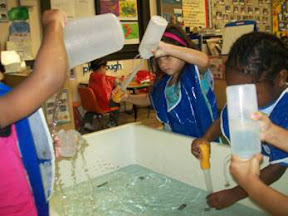 Atoms, molecules, protons, electrons, bonding. Nothing new there, so why don’t your students remember which is which and how it works? A question with many possible answers, but now, perhaps a solution! Use this learning package to introduce, review, or add to your instruction. How Atoms Bond: Ionic Bonds uses animated sequences to really hit home how electrons are involved in bonding. MUCH easier than drawing them yourself!
Atoms, molecules, protons, electrons, bonding. Nothing new there, so why don’t your students remember which is which and how it works? A question with many possible answers, but now, perhaps a solution! Use this learning package to introduce, review, or add to your instruction. How Atoms Bond: Ionic Bonds uses animated sequences to really hit home how electrons are involved in bonding. MUCH easier than drawing them yourself!
This is just one of over 30 lesson packages that are part of the Chemistry Now series produced by the team of NSTA, NBC Learn, and NSF. If you use them, please leave comments below each posting about how well the information worked in real-world classrooms. And if you had to make significant changes to a lesson, we’d love to see what you did differently, as well as why you made the changes. Leave a comment, and we’ll get in touch with you with submission information.
–Judy Elgin Jensen
Photo of salt pools and harvest in southern India by Perumal Venkatesan
Video: “How Atoms Bond: Ionic Bonds” uses common table salt to explain and illustrate what happens between the electrons and protons in atoms of the element sodium and atoms and the element chlorine to make crystals of sodium chloride.
Video: “Chemistry of Salt (NaCl)” explains and illustrates the molecular structure of sodium chloride (NaCl) crystals; the structure and symmetry of crystal lattices; and why one crystalline solid, salt, melts another, ice.
Video: “The Chemical Bonding Between Cloves and Nutmeg” focuses on the variety, strengths — and placement — of chemical bonds in the structures of molecules. In a “bonding” story of another kind, NBC Learn profiles Purdue materials chemist Jon Wilker, who’s making synthetic adhesives based on the glues mussels produce underwater.
Video: The NBC News report “First-Ever Image of a Molecule,” shows the picture of a molecule of pentacene taken by researchers at IBM.
High school lesson: In this lesson, students compare ionic and covalent bonds by examining water’s Lewis dot structure and observing water’s reaction to a statically charged material.
Please tell us what you think. Click here to complete a 15-minute survey. Thanks.
You can use the following form to e-mail us edited versions of the lesson plans:
[contact-form 2 “ChemNow]







 I’d like to change my approach to learning vocabulary. Even when I ask students to write definitions in their own words, they don’t seem to understand the terms. Any suggestions?
I’d like to change my approach to learning vocabulary. Even when I ask students to write definitions in their own words, they don’t seem to understand the terms. Any suggestions?
 Atoms, molecules, protons, electrons, bonding. Nothing new there, so why don’t your students remember which is which and how it works? A question with many possible answers, but now, perhaps a solution! Use this learning package to introduce, review, or add to your instruction. How Atoms Bond: Ionic Bonds uses animated sequences to really hit home how electrons are involved in bonding. MUCH easier than drawing them yourself!
Atoms, molecules, protons, electrons, bonding. Nothing new there, so why don’t your students remember which is which and how it works? A question with many possible answers, but now, perhaps a solution! Use this learning package to introduce, review, or add to your instruction. How Atoms Bond: Ionic Bonds uses animated sequences to really hit home how electrons are involved in bonding. MUCH easier than drawing them yourself! One of my principals shared a comment at a faculty meeting: School is where old people do most of the work while the young people sit back and watch. His point was to start a discussion of how (and why) to engage students actively and help them assume more responsibility for their own learning.
One of my principals shared a comment at a faculty meeting: School is where old people do most of the work while the young people sit back and watch. His point was to start a discussion of how (and why) to engage students actively and help them assume more responsibility for their own learning.